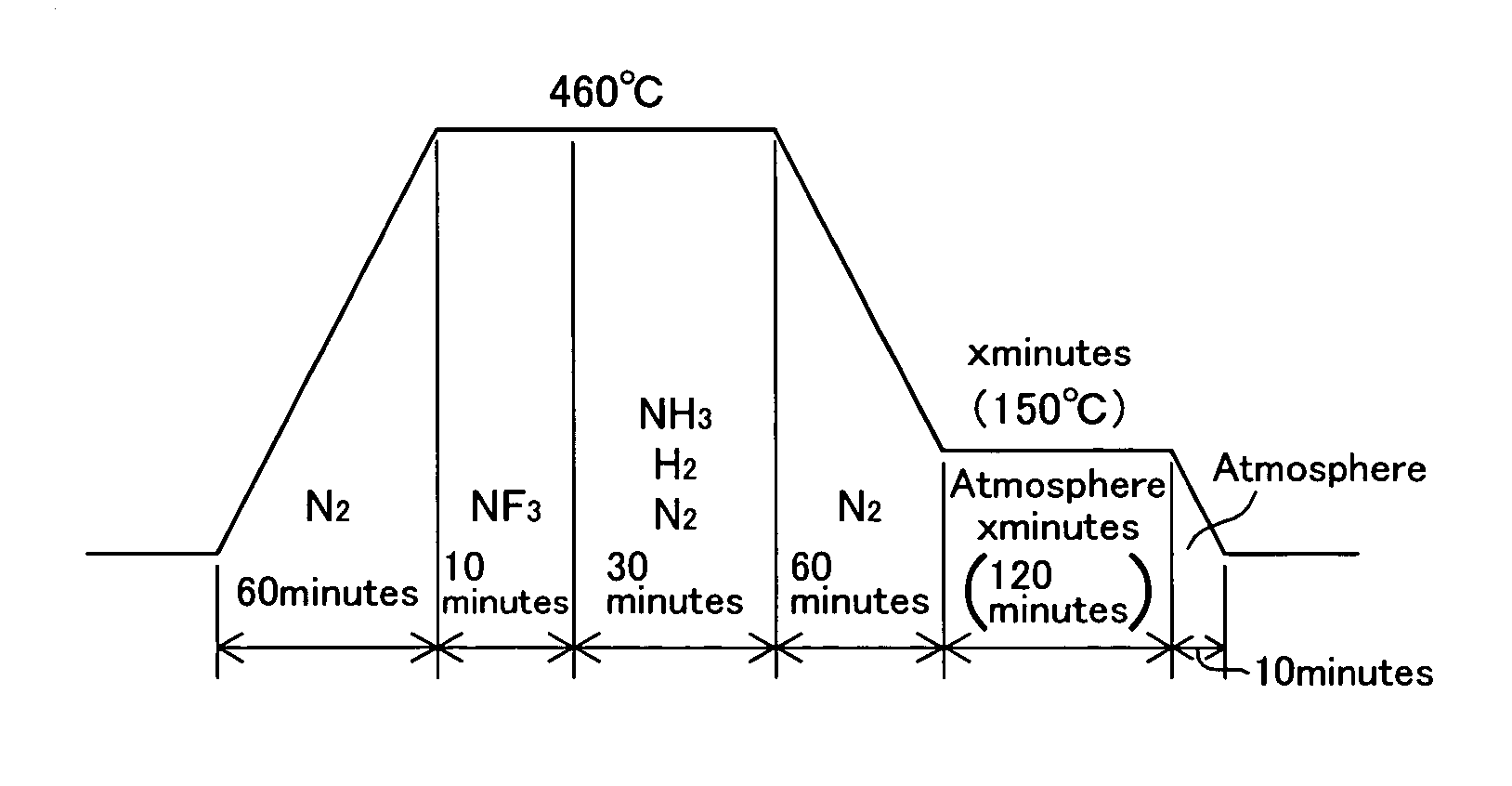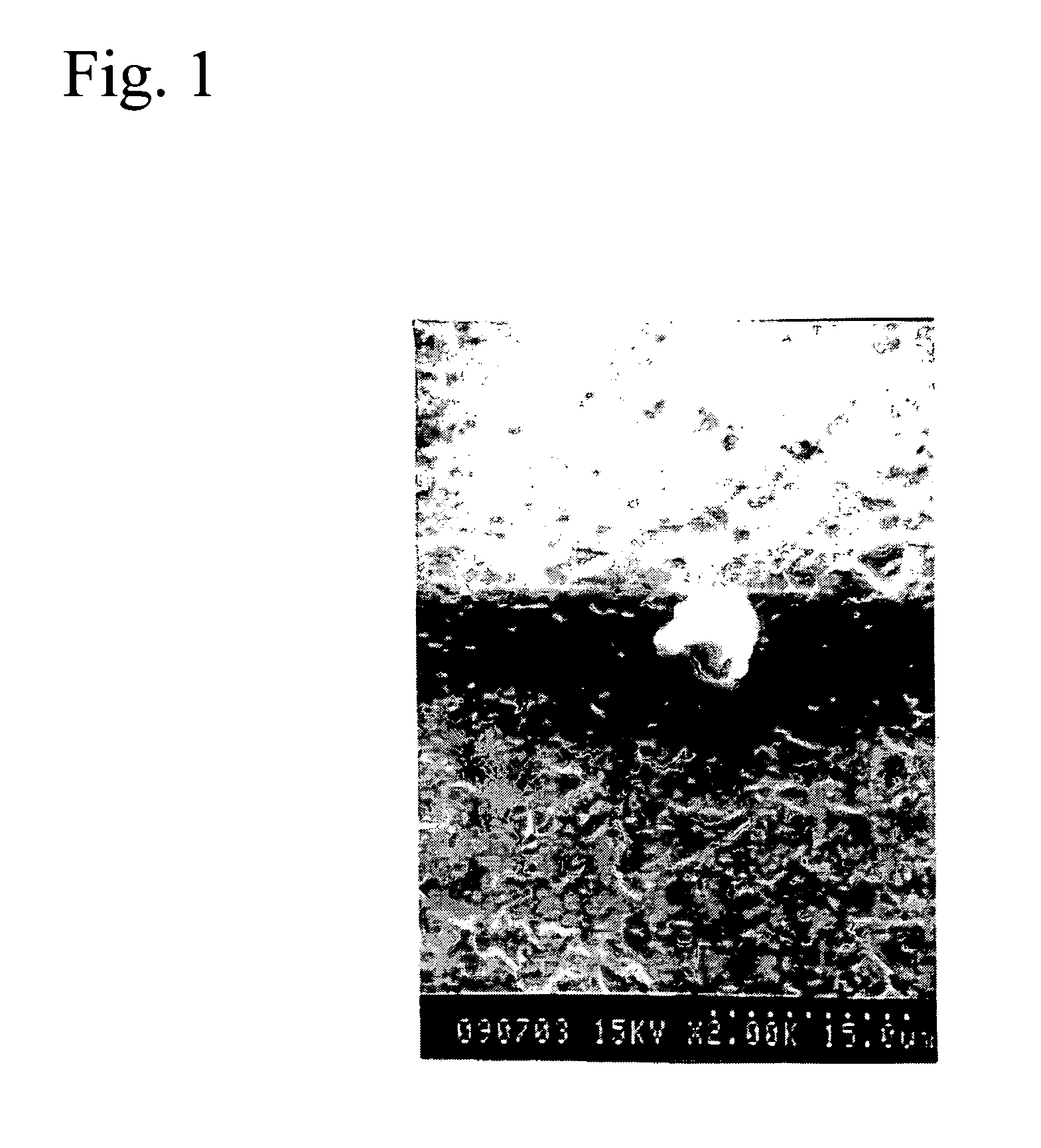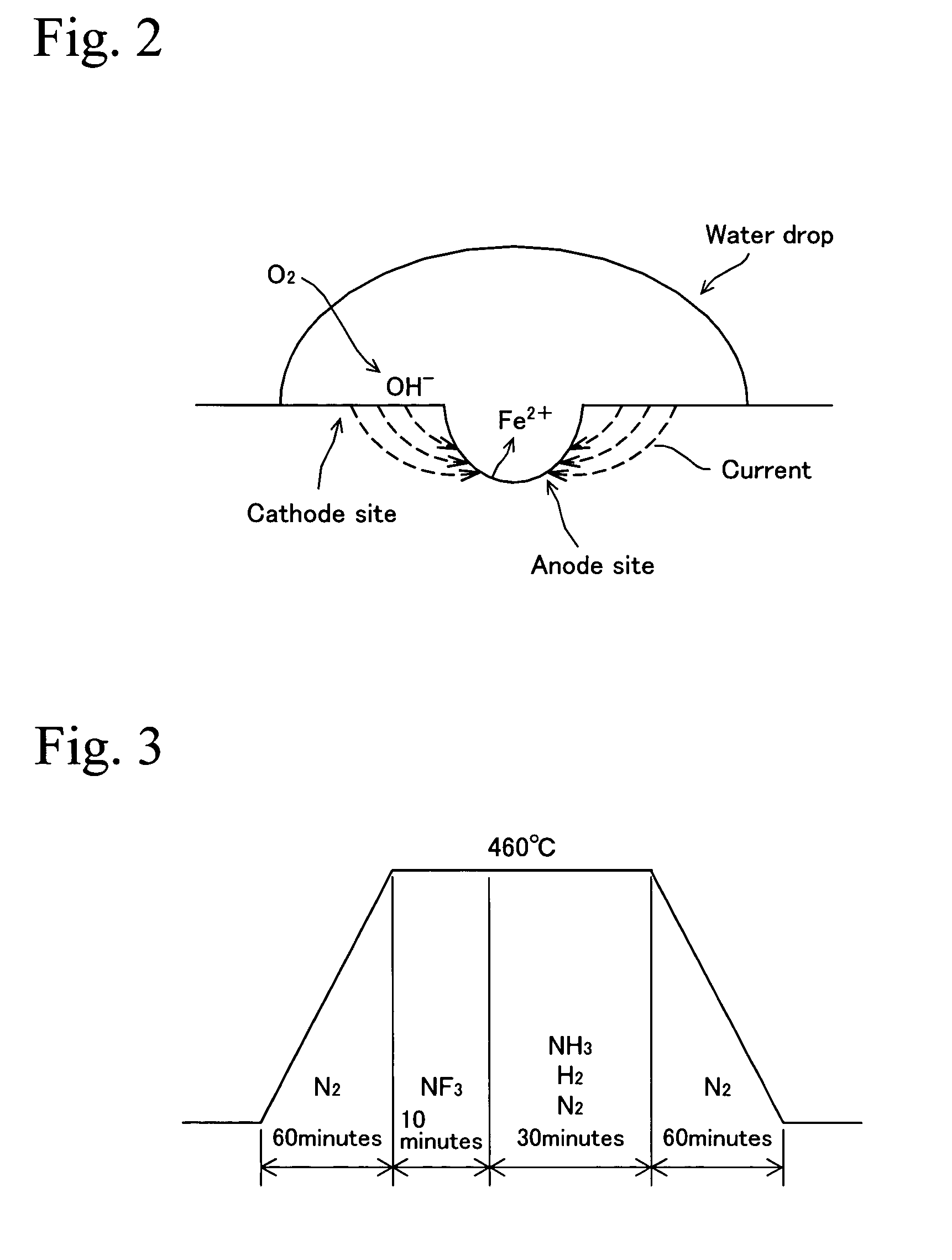Method for producing nitriding steel
- Summary
- Abstract
- Description
- Claims
- Application Information
AI Technical Summary
Benefits of technology
Problems solved by technology
Method used
Image
Examples
Example
[0034]Desirable Examples of the present invention are explained as follows.
(1) Heating Conditions in Passivating Treatment
[0035]A number of test pieces were cut from maraging steel having a composition in which elements except Fe and inevitable elements shown in Table 1 are contained. These test pieces were nitrided, and passivating treatment was performed in the air with varying heating condition which is a combination of heating temperature and time to obtain nitrided steel of Examples. The heating condition of FIG. 3 was applied to the nitriding treatment and the heating condition of FIG. 4 was applied to the passivating treatment. Set temperatures and set times are shown in Table 2. On the other hand, the Comparative Examples were obtained in which only the above-mentioned nitriding treatment was performed and the passivating treatment was not performed. The Comparative Examples are shown in a field of treating time 0 min in Table 2. FIG. 8 is a drawing showing a combination of ...
PUM
| Property | Measurement | Unit |
|---|---|---|
| Temperature | aaaaa | aaaaa |
| Temperature | aaaaa | aaaaa |
| Temperature | aaaaa | aaaaa |
Abstract
Description
Claims
Application Information
 Login to View More
Login to View More - R&D
- Intellectual Property
- Life Sciences
- Materials
- Tech Scout
- Unparalleled Data Quality
- Higher Quality Content
- 60% Fewer Hallucinations
Browse by: Latest US Patents, China's latest patents, Technical Efficacy Thesaurus, Application Domain, Technology Topic, Popular Technical Reports.
© 2025 PatSnap. All rights reserved.Legal|Privacy policy|Modern Slavery Act Transparency Statement|Sitemap|About US| Contact US: help@patsnap.com



